I just wrapped up my first trust administration and from this experience, this blog entry was born. Based on the questions asked by my client, I realized that many individuals out there are sorely uneducated about this process. Below is a brief explanation of this process. One of the primary misconceptions that I have encountered is the belief that once the trust has been set up, nothing remains to be done at the time of death of the settlor. This is a misconception, and one that leads to anger in clients when they are informed that this just isn't the case. Based on the type of trust that a person is dealing with, this process can be easy and pain free. It involves the collection of assets, payment of debts and taxes, as well as the distribution of the remaining assets in the manner prescribed by the trust document.
Briefly, if you are unfamiliar with trusts, there are two main types — Revocable and Irrevocable. At the death of the settlor, all revocable trusts become irrevocable and are therefore no longer subject to any change, even by a co-settlor. Trusts can be simple in that their dispositive provisions allow for the termination of the trust at the death of the settlor and the assets distributed outright to the beneficiary(ies). Trusts can also be more complex in that they provide that the assets be distributed to further sub-trusts. The most common type of the complex trust is an A-B trust. This is the most common trust arrangement between spouses and will be used to aid our discussion. With this type of arrangement, one revocable trust is created at the inception with the settlors (husband and wife creating the trust) as the co-trustees. At the death of the first spouse, the trust is to be divided into two trusts — the "A," or survivor's trust, and "B," or bypass trust. Before this division can be made, below is a checklist of what must be done. This list is not exhaustive.
- Lodge pour-over will with Probate Court. This is a simple process with no charge. This is done even where there will be no Probate.
- Collect all estate assets. This includes requesting reports from brokerage firms, banks, life insurance companies, and other similar financial institutions as of the date of death of the first settlor.
- Assets need to be valued. Real estate should be appraised by a certified appraiser. This should be done expeditiously because this process will help determine whether a formal probate is necessary or whether any estate taxes are due. A probate will be due if there are total assets valued over $150,000 passing outside the trust. As of 2012, an estate tax return will be due if the total taxable estate is over $5,120,000.
- Once the assets have been collected, a probate petition should be filed if necessary and/or an extension should be requested from the IRS if an estate tax is due. California does not have an inheritance tax, so no State Estate Tax Return is required.
- Notice must be given to all beneficiaries and heirs informing them of the trust administration as well as notifying them of their rights as prescribed in Probate Code 16061.7. This notice must be sent within 60 days of the date of death.
- The final step of the administration process is distributing the estate. This is done by first putting all the collected assets in a "pot". All debts, expenses of the estate, and taxes must be taken out of the pot. Then, specific bequests will be made according to the trust. For example, if the trust dictates that the diamond heirloom pendant be given to cousin Becky, this will be done at that point of the process. Then, what's left of the estate will be distributed according to the trust; in the case of an A-B trust, the remaining assets will be divided between the A trust and the B trust.
Another misconception concerning trust administration is that there is no additional cost beyond the initial cost of creating the document. The cost for a trust administration will vary based on how complicated the process is and also the value of the estate. It is usually cheaper than a formal probate, but there is definitely a cost.
To discuss whether a trust is the right estate planning device for your particular set of circumstances, contact an experienced trust and estate attorney for a consultation.
About the Law Office of Jan A. Meyer
The Law Office of Jan A. Meyer was founded in 2011 in Dana Point, California. It was established to provide clients with committed and compassionate estate planning services to assist with asset protection and strategic goals. Our law firm provides a personalized and cost-effective alternative to large law firms or self-guided online forms. At the Law Office of Jan A. Meyer, families and individuals are guided through a series of decisions to build a plan that ensures their financial and personal legacy are protected when they are no longer able to care for it. Learn more at www.danapointwills.com.
